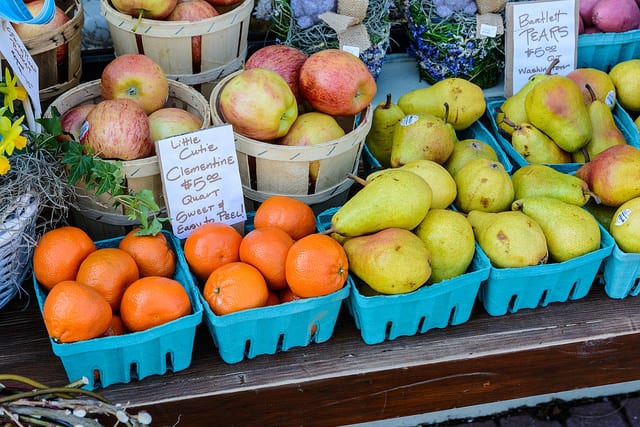At Postconsumers, we’ve not infrequently suggested that one of the best eco-friendly activities you can take when it comes to your eating habits is to eat seasonal food. In fact, in a quick audit, we found at least five instances on this blog and article archive where we mentioned it. We, of course, mention it repeatedly because the less that you eat seasonally, the more you typically absorb the carbon footprint of food miles around your culinary habits. However, eating seasonally can also be a trap if you apply generic premises to what you’re selecting.
One of the most frequent places that confusion regarding the facts of eating seasonally happens is with the category of fruit. Yes, fruit. It seems like such an obvious and healthy thing, but treated incorrectly you could actually be leaving some pretty big footprints on the planet.
Fact Number One: Fruit is Absolutely Associated with Summer Food and Drink
If you don’t agree with us on this, just take a moment to think about it. From fruit salad to watermelon, from tropical fruit summer drinks to lemonade, from fruit pies to strawberry shortcake, fruit is everything summer on most menus. And it makes sense, because fruit does grow for harvest in the summer. That’s why we often discourage you from stocking up on the fresh fruit in the winter when it’s obviously been flown in from countries or even oceans away. But just because fruit grows in the summer, it doesn’t mean that fruit grows where you are in the summer. And that means that you may be doing just as much damage with your summer fruit parfait as you were doing with your winter fruit parfait.
Fact Number Two: If It’s Not Local or Native, It’s Not Really Summer Seasonal
This is the truth – if the fruit that you are eating is not native to your area of the country or world, then it’s really not seasonal at all. If fruit isn’t being grown around where you live, where is it coming from? Chances are good that it’s coming from somewhere where the warm weather needed to grow fruit happens all year long. Typical locations if you live in America would include central California, Florida, Mexico and Central and South America. Let’s even for the moment overlook that in many of those places there are labor and human rights issues likely associated with the growing of the fruit that you’re eating. How is that fruit getting from a climate that is not yours to you? It’s being transported on boats, trains, trucks and planes. All of those miles – and the packaging and refrigeration required to transport your fruit are leaving a boot-sized carbon footprint on the planet just so that you can “eat seasonally” by not actually eating seasonally at all.
Fact Number Three: Your Non-Seasonal Produce Doesn’t Even Really Have Lush Summer Benefits
The irony of the situation is that the reason fruit is associated with summer is that, for native fruits, summer is when they are at their most lush, sweet and delicious. However, if you’re eating fruit that was imported from countries away, you’re actually getting none of that benefit. The fruits that you’re eating were likely picked before they reached their peak freshness so that they would continue to ripen while they were being transported to you rather than go rotten. You may or may not be getting a piece of fruit that’s actually already ripe or not overly-ripe. Just keep in mind that just because it’s summer, it doesn’t mean that fruit that took a plane ride to get to you will taste like summer fruit. And in that case, what’s the point?
What Can You Do Tip One: Research Your Local Fruit Options
The first and most obvious thing that you can do is to figure out what fruit would be local to you and focus on that. There are very few places in the world where there isn’t some type of seasonal summer fruit or berry – in fact in many places those fruits and berries are seasonal all year long. Before you give up on reducing your carbon footprint of summer fruit, figure out what won’t be hurting the planet.
What Can You Do Tip Two: Preserve What’s Local
For fruit and berries that are local, you can reduce your food miles footprint all year long by learning to preserve your seasonal summer foods.
What Can You Do Tip Three: Think Frozen, Not Fresh
Obviously frozen fruits also have a food miles imprint. However, because there isn’t a rush to get them to market before they spoil or rot, they can be shipped in larger quantities less frequently and therefore absorb less of a carbon footprint to get to you. Chances are that much of the “fresh” summer produce you’re buying was on ice during its transport anyway, so switching to frozen produce is more of a change of habit than anything else.
Just because it’s summer, it doesn’t mean that it’s fruit season for everybody. Be responsible about your choices and you can still eat well and lushly without harming the earth.
Did we miss a tip on being eco-friendly and enjoying summer food while being responsible about fruit? Tell us about it on the social media channels below.
Facebook | Twitter | Instagram | Tumblr | Pinterest | Google+ | Medium
Photo Credit: Peter Miller via Flickr





